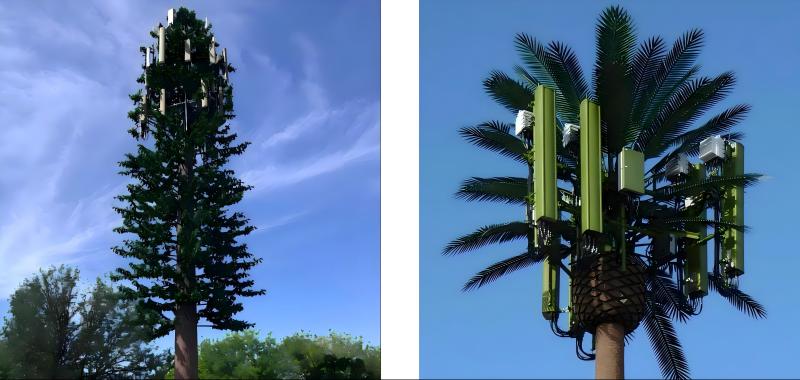Si vous avez déjà repéré un « arbre » inhabituellement grand et parfaitement symétrique dans un parc urbain ou près d'un site historique, un arbre qui ne perd jamais de feuilles en hiver, vous avez peut-être rencontré une tour 5G déguisée en tour d'arbre bionique Ces structures camouflées se propagent rapidement à l’échelle mondiale et leur histoire combine ingéniosité technique, psychologie publique et esthétique environnementale.

Contrairement aux réseaux 3G/4G, La 5G s'appuie sur des ondes radio à haute fréquence (comme les ondes millimétriques) pour des vitesses fulgurantes. Mais il y a un compromis :
Portée de couverture plus courte :Les signaux 5G ne parcourent que 100 à 300 mètres dans les villes (contre 1 à 5 km pour la 4G).
Mauvaise pénétration :Il a du mal à traverser le béton, le verre ou même les fortes pluies.
Pour compenser, des millions de nœuds 5G doivent être déployés. Par exemple, un seul pays a construit près de 4 millions de stations de base 5G d'ici mi-2024. Mais installer des tours métalliques volumineuses partout est peu pratique et rencontre souvent de la résistance.
1. S'intégrer à l'environnement
Dans des zones pittoresques comme Tour de la Grue Jaune (Wuhan) ou Lac de l'Ouest (Hangzhou) Les tours imitent la flore locale en utilisant de la fausse écorce, des branches ou des vignes pour éviter de perturber la vue.
Un site a signalé que des écureuils confondaient des vignes synthétiques avec de vraies et les mâchaient !
Les installations urbaines se cachent comme lampadaires, climatiseurs, « chauffe-eau solaires » ou même plaques d'égout .
2. Lutter contre « l'anxiété liée aux radiations »
Malgré le consensus scientifique selon lequel la 5G
rayonnement non ionisant
poses
aucun risque avéré pour la santé
(c'est 10 fois inférieur aux limites de sécurité strictes), la peur du public persiste. Le camouflage réduit les rappels visuels des « antennes-relais », apaisant ainsi les inquiétudes.

Les tours modernes déguisées ne sont pas seulement des coquilles cosmétiques : elles intègrent des fonctionnalités avancées :
Science des matériaux :Utilisation de couvertures en forme d'écorce matériaux radio-transparents qui ne bloquent pas les signaux. Les antennes sont nichées dans des branches ou des troncs creux.
Maintenance furtive : Certains incluent systèmes d'escalade cachés avec des échelles rétractables et des cordes de sécurité, minimisant le matériel visible.
Conception modulaire :Les feuilles/branches artificielles détachables permettent des mises à niveau ou des réparations faciles.
Structures à double usage :De plus en plus, ces tours accueillent capteurs de qualité de l'air, de météo ou de caméras de sécurité , évoluant vers des « tours numériques » multi-rôles.
Sites touristiques :Au mont Tai, des tours sculptées comme rochers préserver l'esthétique naturelle.
Parcs à thème : Le LEGOLAND de Shanghai cache des équipements 5G à l'intérieur « briques de signalisation » colorées sur les toits, se fondant dans son ambiance ludique.
Villes :Les « arbres à signaux arc-en-ciel » illuminent les rues tout en transmettant des données.
La prochaine vague comprend :
Tours intégrées à l'IA :Analyser le trafic, la pollution ou la foule en temps réel.
Déguisements dynamiques :Structures qui changent d'apparence selon les saisons ou qui projettent de l'art numérique.
Utilisation des énergies renouvelables :Les panneaux solaires « partent » pour alimenter les opérations de la tour.
Les antennes 5G dissimulées représentent un mariage pragmatique entre nécessité et empathie. En atténuant l'empreinte visuelle de la technologie, elles offrent une connectivité. sans sacrifier la beauté ou alimenter la peur – prouvant que le progrès ne doit pas nécessairement perturber notre sens du lieu.